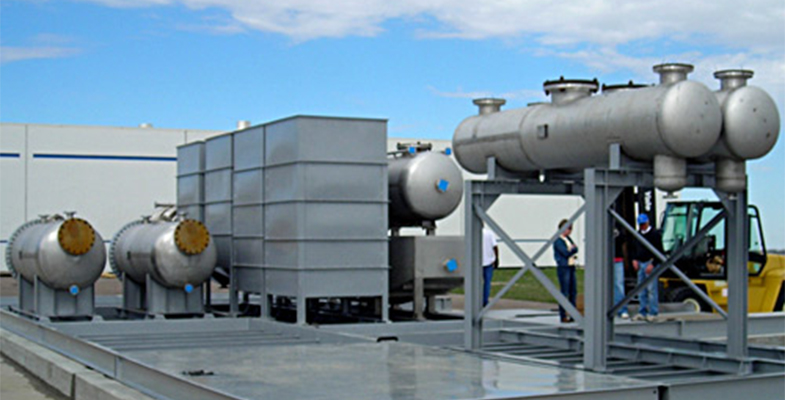Innovations / Thermo Chemical Gasification

THE BASICS OF GASIFICATION
Thermo Chemical Gasification (TCG) is a process that involves various stages; pre-treatment of the feedstock, the gasification processes itself, gas cleaning and the utilization of the gas.
The pre-treatment of the feedstock is essential to achieve the high performance of the gasifier. During the Gasification stage, the feedstock and gasification media like air, oxygen steam or a mix of these are injected into the system. The gasification media breaks down the feedstock. The efficiency is higher in gasification processes as they can be run at a higher temperature than combustion. 70 - 80% of the energy contained in the feedstock is converted to the energy content of the Syngas, the rest being heat and losses.
The Synthetic Gas produced primarily constitutes hydrogen (H) and carbon monoxide (CO). Cleaning the gas is an important step especially the removal of tar particles as they can damage the gas engine.
SOURCES OF SYNGAS
One of the many advantages of the use of Synthetic Gas to produce clean fuel is that it can be produced from waste materials which would otherwise, need to be discarded. Instead of placing waste products in landfills or the oceans, this waste can be used to generate useful and eco-friendly fuel. This makes the Thermo Chemical Gasification process both an efficient means of producing energy and an environmentally friendly option for the recycling of waste products.
Virtually any carbon-based material can be gasified to produce syngas. The carbon that is stored in the plant material is released as carbon monoxide and carbon dioxide allowing for nearly all the carbon in the biomass to be converted to syngas.
ADVANTAGES OF SYNGAS PRODUCED BY NAVRATTAN’S TCG TECHNOLOGY
Some of the major benefits of Syngas produced through Thermo Chemical Gasification is:
- > Generation of renewable power.
- > Conversion of waste materials to useful and ‘clean’ fuels.
- > Feedstock flexibility.
- > Low capital cost – less than ½ the cost of conventional designs.
- > Cost-effective and cleaner than conventional combustion process.
- > One of the most efficient technologies for waste treatment.
- > Rapid deployment – 12 months or less for a single unit.
- > Modular plant design.
- > Reduced carbon emissions.
READ OUR
NEWS
-
Embrace 'Green' Energy - An Initiative By Mr. Himanshu VermaOctober 3rd 2019
-
Navrattan Holdings Limited : Composite Electric BusJuly 26 2019
-
From father's business to Global EntrepreneurSeptember 06 2019
-
‘Best Out Of Waste’ — Thermo Chemical GasificationAugust 30 2019
-
First SUNSUL Technology Project in PunjabAugust 07, 2015



